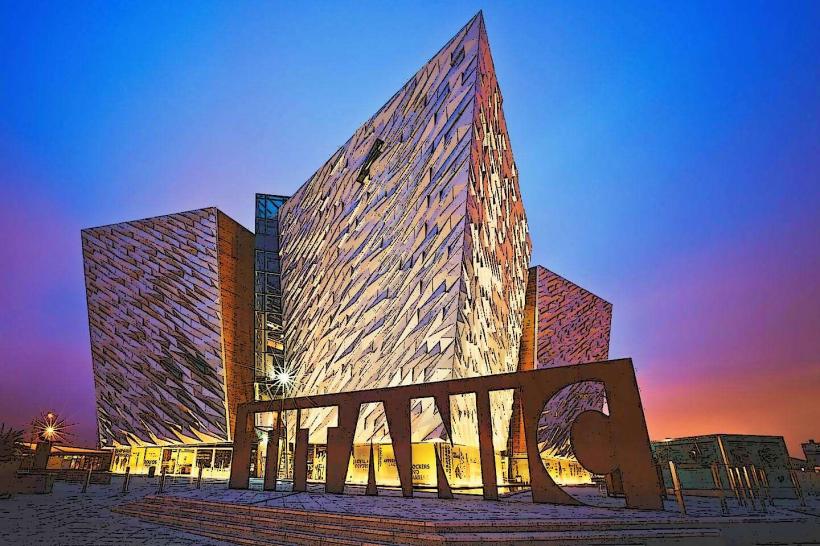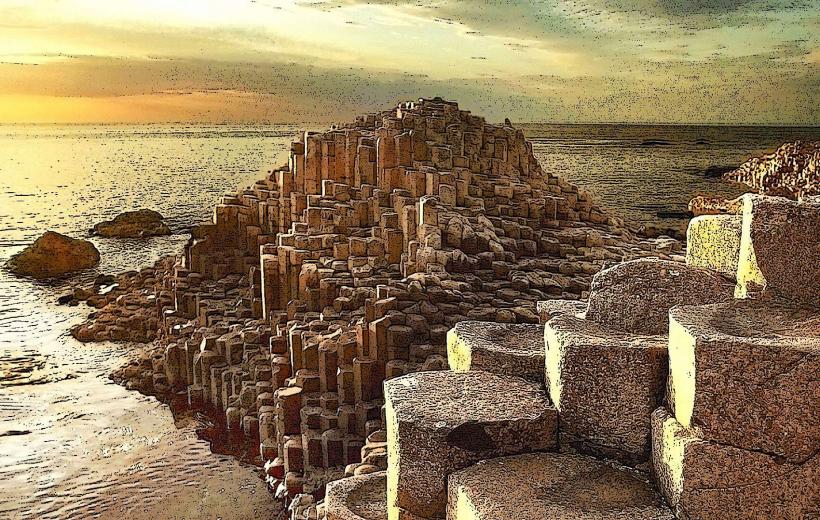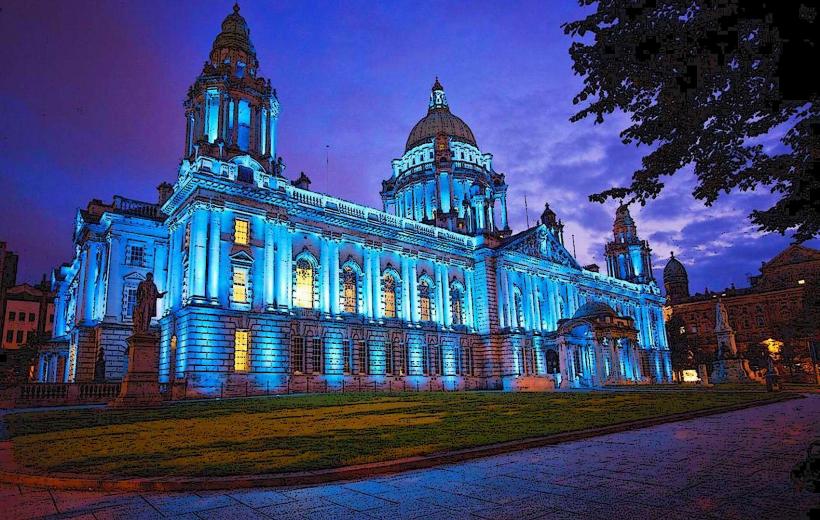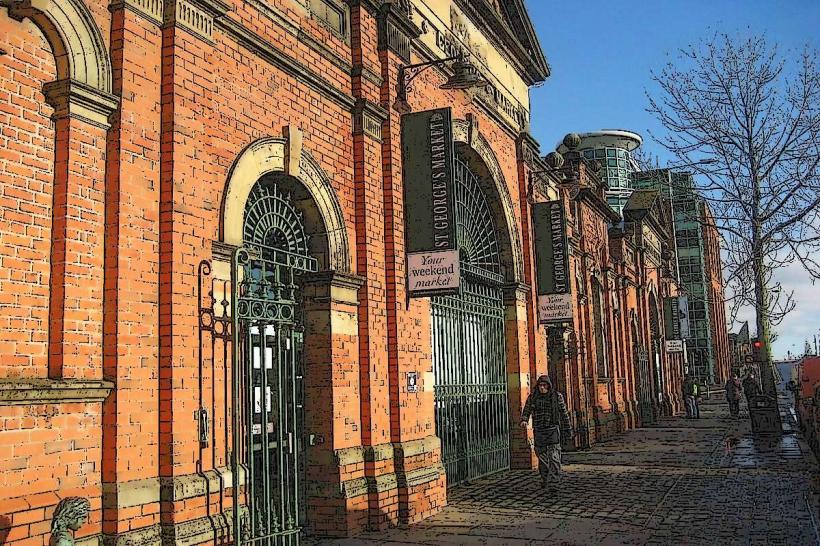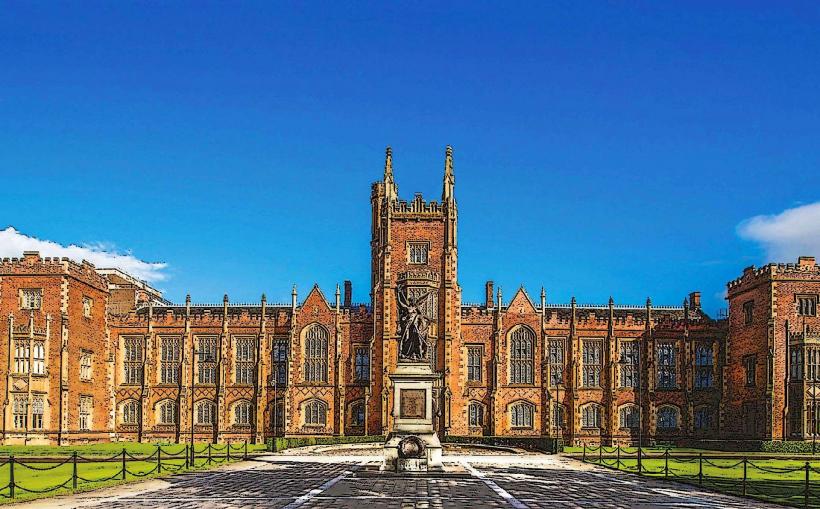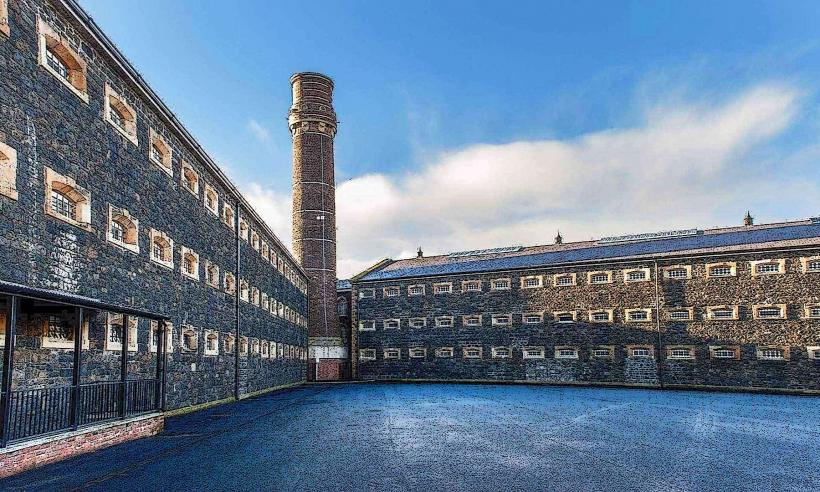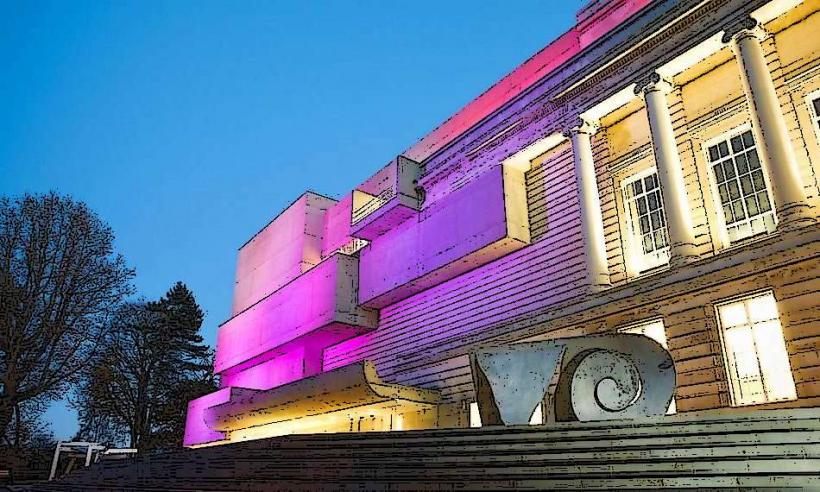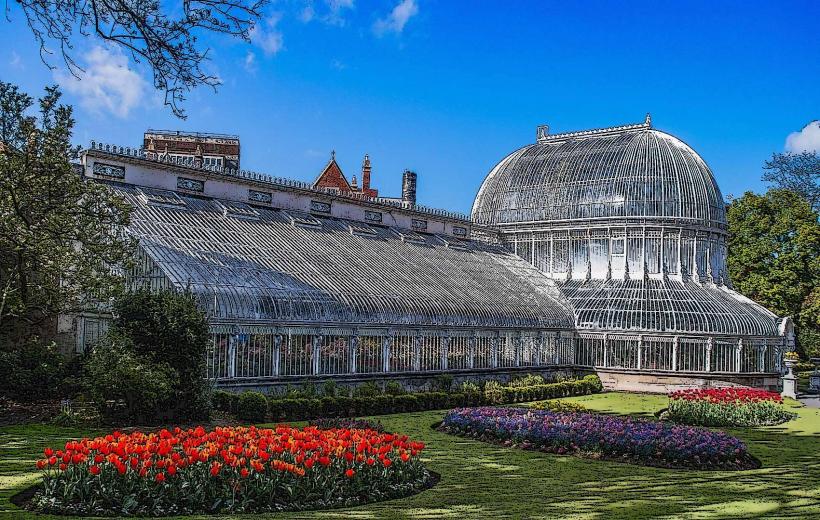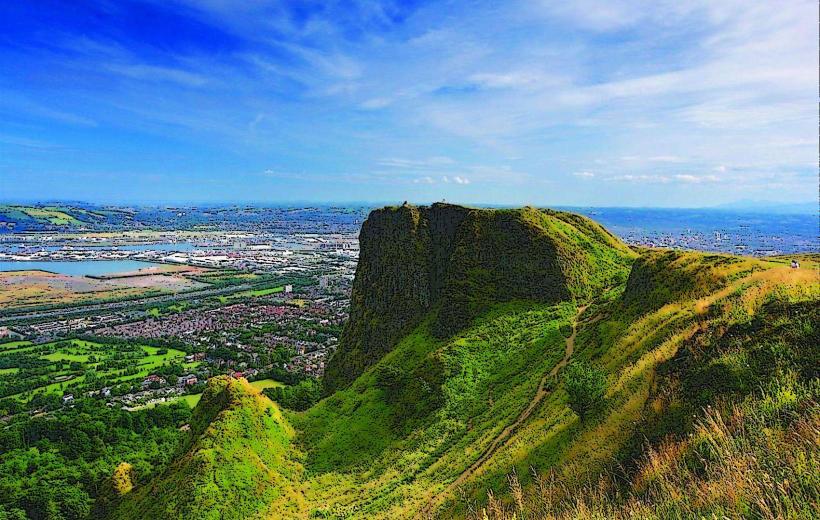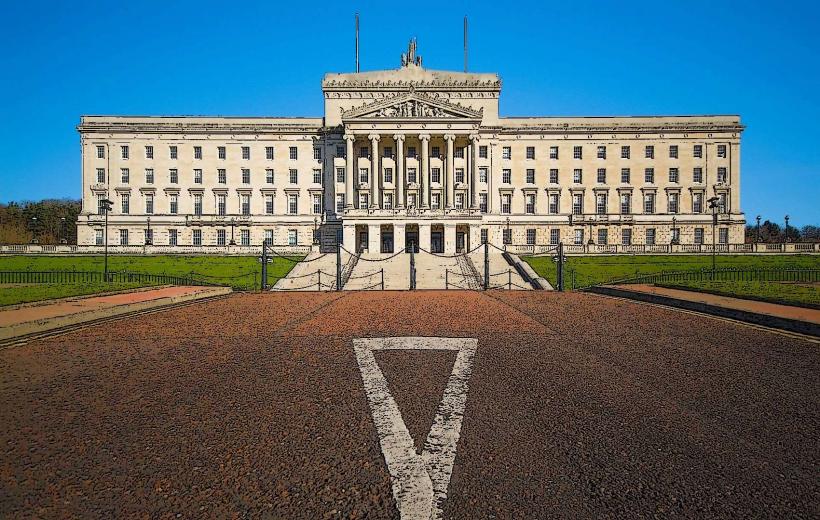Information
City: BelfastCountry: Ireland
Continent: Europe
Belfast, the capital and largest city of Northern Ireland, is a vibrant cultural hub known for its rich industrial history, striking architecture, and significant political past. Located on the River Lagan in the eastern part of Northern Ireland, Belfast has undergone major transformation over recent decades, becoming a modern and diverse city that attracts visitors from around the world. The city offers a mix of historical landmarks, cultural institutions, and a thriving arts scene.
1. Geography and Location
- Location: Belfast is situated in the northeast of Ireland, near the Antrim Plateau and the Belfast Lough, which provides the city with scenic views and access to the Irish Sea.
- Climate: Belfast has a temperate maritime climate, with mild winters and cool summers. The proximity to the sea helps keep the temperature moderate, but it can be quite rainy throughout the year.
2. History
- Early History: The origins of Belfast can be traced back to the 9th century, when it was a small settlement. The name "Belfast" is derived from the Irish "Béal Feirste", meaning "mouth of the river Farset," which refers to the river that runs through the city.
- Industrial Revolution: Belfast rose to prominence during the 19th century, becoming one of the most important industrial cities in the British Empire. It was known for shipbuilding, linen manufacturing, and heavy industry. The city’s shipyards produced famous ships such as the RMS Titanic.
- The Troubles: Belfast was deeply affected by The Troubles, a conflict that took place between the late 1960s and 1998, involving tensions between nationalists (mostly Catholic) who wanted to unite with the Republic of Ireland and unionists (mostly Protestant) who wanted to remain part of the United Kingdom. The legacy of this conflict is still evident in some parts of the city.
- Modern Belfast: After the signing of the Good Friday Agreement in 1998, Belfast began to heal and rebuild, attracting tourists and investment. The city is now known for its cultural and artistic revitalization, and it continues to evolve as a vibrant urban center.
3. Landmarks and Attractions
Belfast is home to numerous landmarks and attractions that highlight its unique history and culture.
- Titanic Belfast: Perhaps the most famous attraction in the city, the Titanic Belfast museum is dedicated to the history of the RMS Titanic, which was built in Belfast. The museum, located in the heart of the former shipbuilding district, offers an immersive experience with exhibits about the ship’s construction, its ill-fated voyage, and the aftermath. The building itself is an architectural marvel, resembling the bow of a ship.
- The Crown Liquor Saloon: One of the most famous pubs in Belfast, the Crown Liquor Saloon is a Grade A-listed building known for its ornate Victorian interiors. It has been serving drinks since the 19th century and is considered a historic pub with unique tilework, stained glass, and carved wood.
- Belfast City Hall: Located in the heart of Belfast, City Hall is an impressive landmark that serves as the headquarters of Belfast City Council. Completed in 1906, it features a stunning Baroque Revival design, with a large dome and intricate stonework. The building is surrounded by Donegall Square and is a popular spot for both locals and tourists.
- St. George's Market: This historic market, dating back to the 19th century, is one of the best places in Belfast to sample local food and crafts. It has been beautifully restored and offers a range of fresh produce, artisan goods, and live music.
- Belfast's Murals: One of the most striking features of Belfast’s political and cultural history is the collection of murals that adorn the walls of various buildings around the city. These murals depict scenes from The Troubles, as well as the city’s working-class history and political movements. The Falls Road (a nationalist area) and Shankill Road (a unionist area) are particularly famous for their murals, which have become key attractions for visitors interested in the city’s troubled past.
- The Ulster Museum: Located in Botanic Gardens, the Ulster Museum is home to a diverse range of exhibits, including art, history, and archaeology. It features collections on Irish history, ancient Egypt, and natural history, as well as a significant collection of works from Northern Irish artists.
- Botanic Gardens: A beautiful public park in the city, the Botanic Gardens feature a large Palm House, which is one of the oldest glasshouses in the world. The gardens are a peaceful retreat in the city and are home to a variety of plants, flowers, and trees.
- Queen’s University Belfast: One of the oldest universities in Ireland, Queen’s University is located in the Queen’s Quarter of Belfast. Its stunning Victorian architecture, including the Lanyon Building, is a key part of the city’s landscape.
- Crumlin Road Gaol: Opened in 1845 and closed as a prison in 1996, Crumlin Road Gaol is now a museum offering tours that delve into its history. It played a significant role in The Troubles, and visitors can learn about its past as a place of incarceration for political prisoners.
- The Giant’s Causeway: Although not in Belfast itself, the Giant's Causeway is a short drive away and is one of the most popular natural attractions in Northern Ireland. A UNESCO World Heritage site, the causeway consists of 40,000 interlocking basalt columns, created by volcanic activity millions of years ago.
4. Culture and Arts
Belfast has a rich cultural scene, with a thriving arts community, theaters, and live music venues. The city is known for its strong creative industries, and its arts scene reflects both the city’s troubled past and its optimistic future.
- Belfast Opera House: This iconic theater hosts a variety of performances, including opera, musicals, theater productions, and ballet. It is one of the city’s main venues for high-quality performances.
- The MAC (Metropolitan Arts Centre): A modern cultural venue offering a variety of exhibitions, theater performances, music concerts, and workshops. It is located in the Cathedral Quarter and is a hub for the city’s creative community.
- Belfast Film Festival: Held annually, the Belfast Film Festival showcases films from around the world and offers opportunities for emerging filmmakers. It is a highlight of the city’s cultural calendar.
- Live Music: Belfast is renowned for its live music scene, with a variety of venues offering performances in genres ranging from rock to jazz and traditional Irish music. Popular venues include the Limelight and The Empire Music Hall.
5. Shopping and Dining
- Victoria Square Shopping Centre: The largest shopping complex in Northern Ireland, Victoria Square has a wide range of high-street brands, restaurants, and a panoramic viewing platform that offers stunning views of the city.
- CastleCourt Shopping Centre: Located in the city center, CastleCourt offers a range of shops, cafes, and dining options. It is a popular destination for both tourists and locals.
- Belfast Food Scene: Belfast has a growing reputation for its food scene, with numerous restaurants serving traditional Irish fare, as well as international cuisine. St. George's Market is an excellent place to sample local foods, such as Ulster Fry and Irish soda bread.
6. Economy
- Shipbuilding and Industry: Belfast’s historical economy was built around shipbuilding, particularly during the 19th and early 20th centuries. The Harland and Wolff shipyard, where the Titanic was built, remains one of the city's most famous industrial landmarks.
- Tourism: Belfast is a major tourist destination, with a thriving industry focused on the history of The Troubles, Titanic heritage, and modern cultural events.
- Technology and Services: Belfast has shifted towards a more service-based economy, with a growing presence of technology companies and financial services.
7. Transport
- Belfast International Airport: Located approximately 13 miles (21 km) west of the city, Belfast International Airport offers flights to various destinations in the UK and beyond.
- George Best Belfast City Airport: This smaller airport is located closer to the city center and serves both domestic and international flights.
- Belfast Railway Station: Belfast Lanyon Place station connects the city to other parts of Northern Ireland and the rest of the UK. Trains run frequently to Dublin, Liverpool, and London.
- Public Transport: Belfast is well-served by an extensive bus network and a belfast metro service, which makes getting around the city easy for visitors.
8. Conclusion
Belfast is a dynamic city with a rich cultural heritage and a unique political history. With its famous landmarks, such as the Titanic Belfast, Belfast City Hall, and Crumlin Road Gaol, the city offers a mix of historical and modern attractions. Whether you are interested in learning about the city’s industrial past, exploring the arts and culture, or experiencing its vibrant food scene, Belfast is a city that offers something for everyone.

